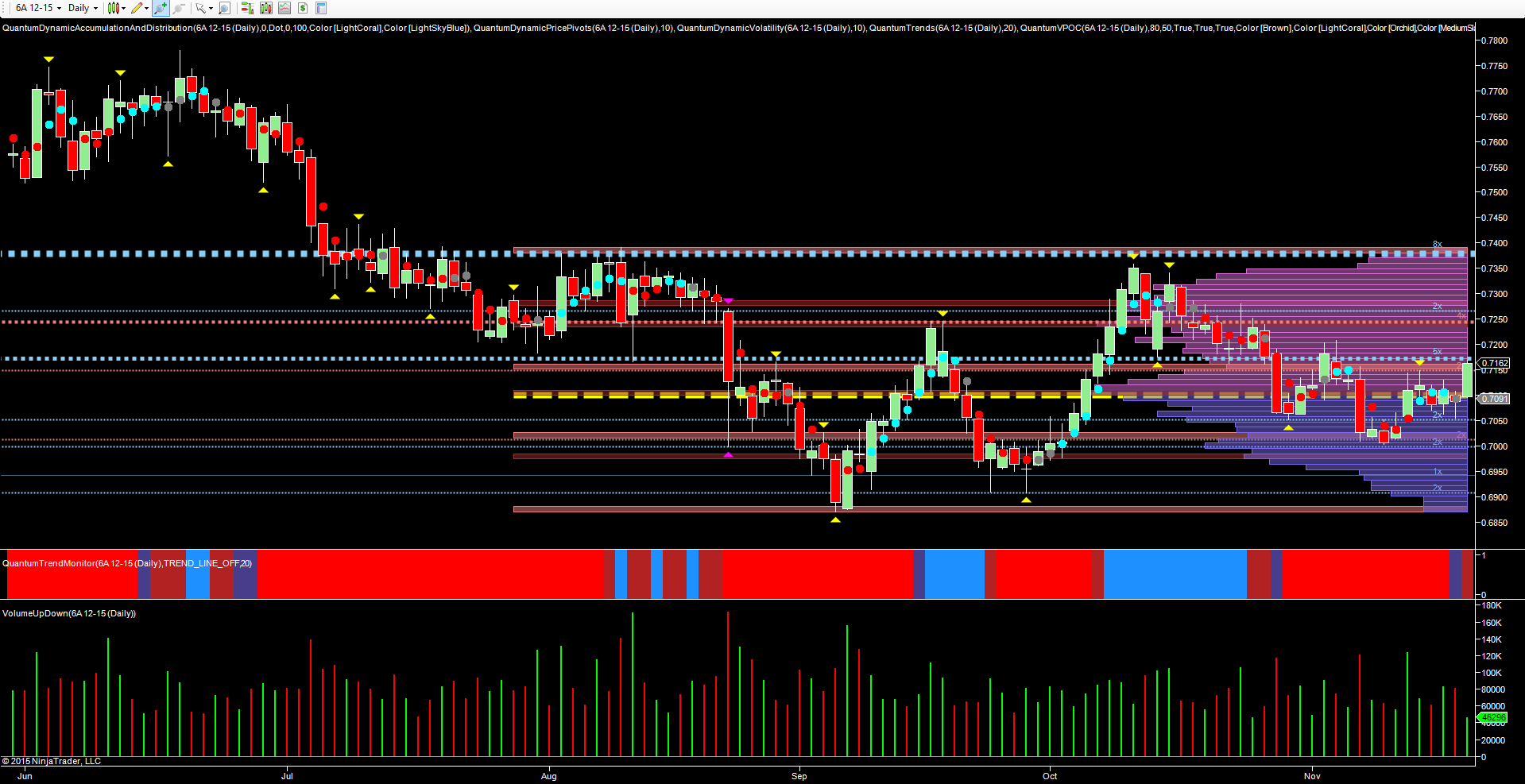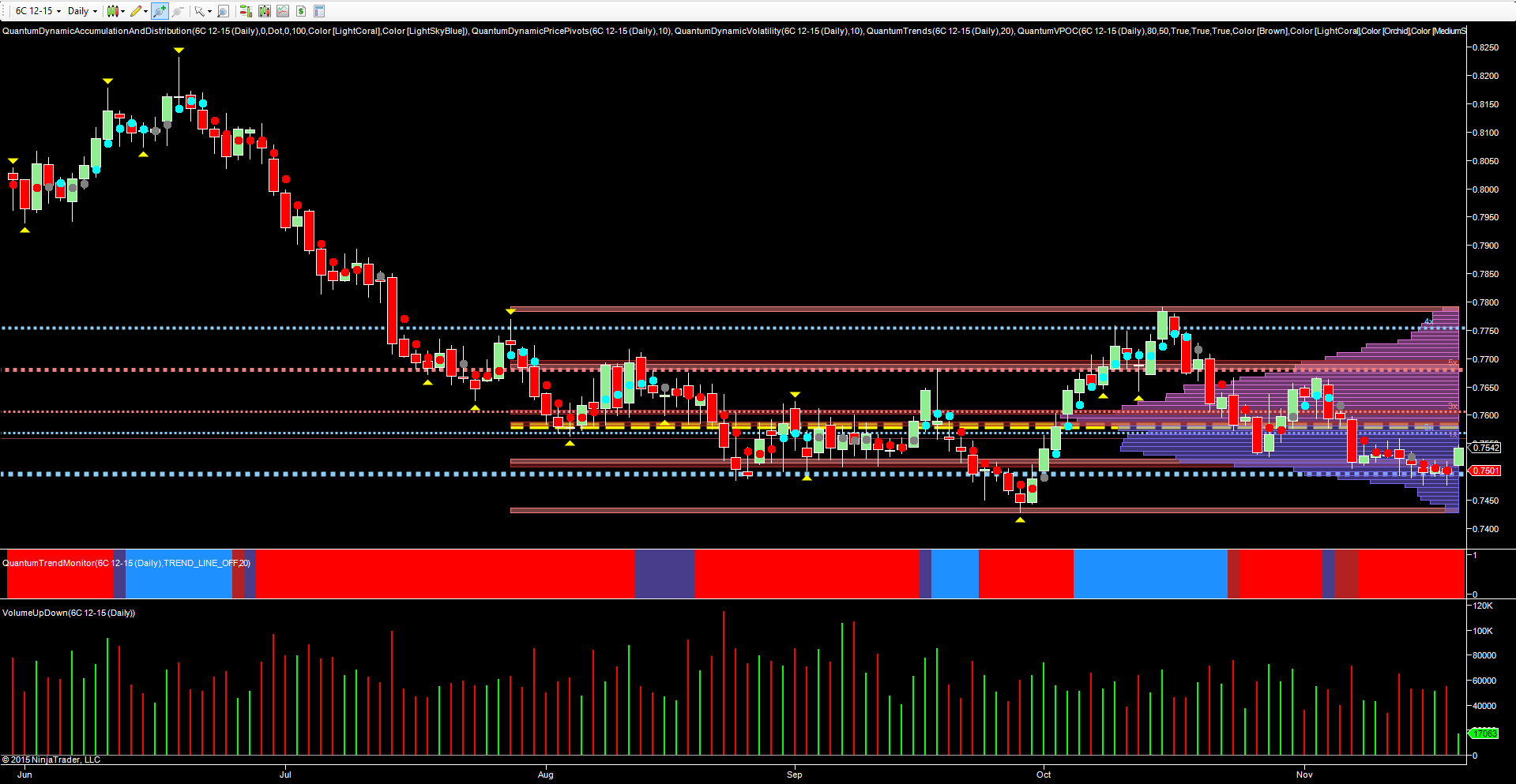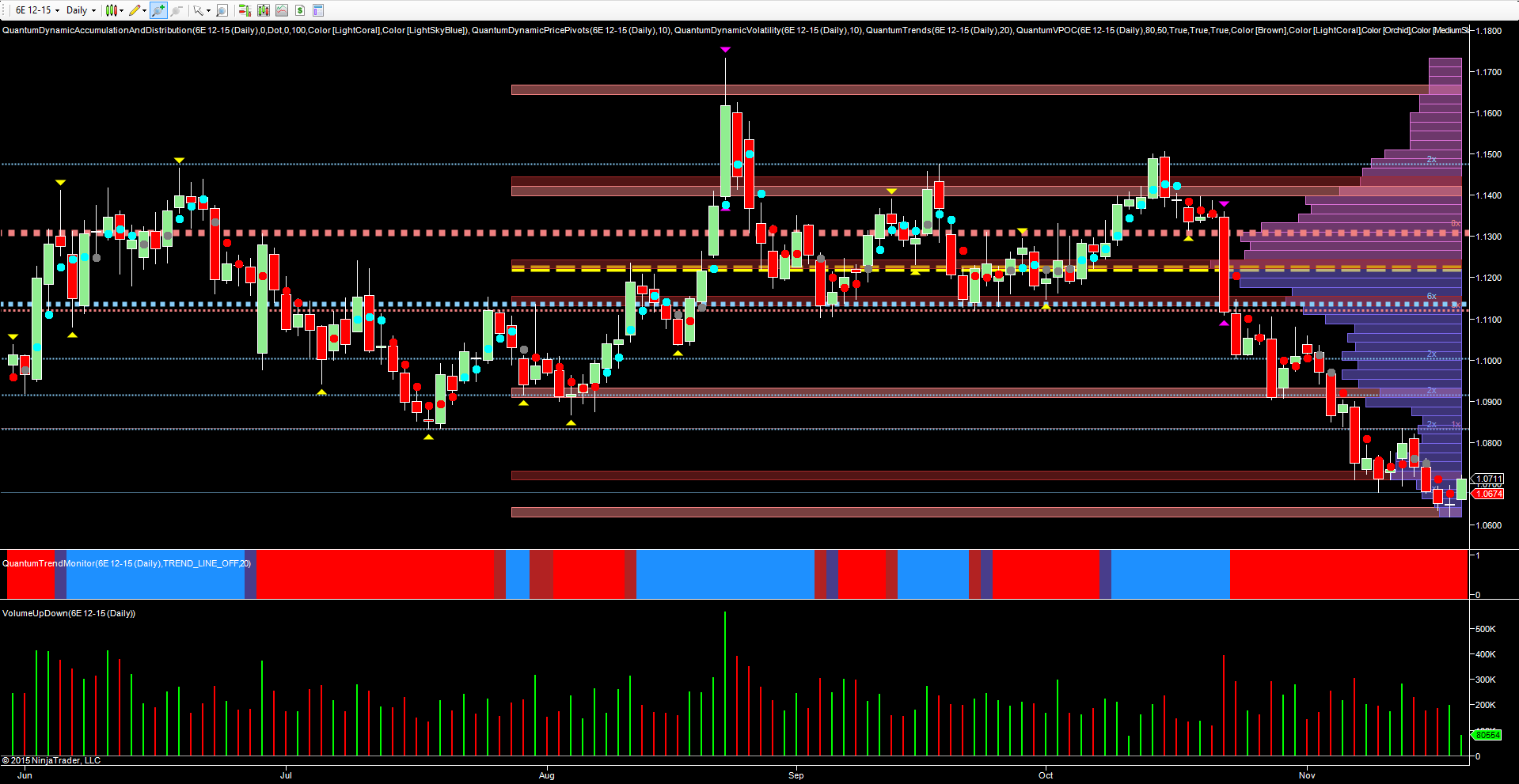Whilst yesterday’s FOMC minutes were flagged as a tier-one item of news, the market reaction suggested that perhaps a tier-three ranking would have been more appropriate, with the markets noting the news with a collective yawn, and failing to react in any meaningful way on the release. Whether the starting pistol on interest rates is fired or not, all eyes will now be focused on crude oil which could ultimately dictate the outcome as energy costs are one of the major contributors to inflation. With the release now consigned to history, it’s time to take a look at the reaction in the currency futures, starting with the December contract for the Australian dollar on the daily timeframe.
And if we start with the key support and resistance levels, these are well defined with the deepest area of resistance in the 0.7380 area, a level that was tested in October but which duly held thereby repeating the price action of August. The consequent sell off eventually found support in the 0.7000 area before rallying again to test the strong resistance now in place in the 0.7170 area, and which is now being tested at the time of writing. For any continuation of the present move higher we now need to see a strong close above this level and price move on towards the secondary resistance at 0.7240. However, with the longer term dollar index chart continuing to remain strongly bullish, the current rally may only be short lived, and bearish sentiment towards the Aussie picks up once again with the pair moving lower to test the 0.7000 area once again. All of this price action is against the context of the volume point of control, the yellow dotted line, which continues to provide the fulcrum for price agreement in the 0.7090 area, and until we see a strong move away from this region, we can expect to see further congestion building in this region with volumes confirming this analysis.
Moving to the British pound and the December 6B currency futures contract, the sharp two day fall of earlier in the month has failed to follow through with the pair duly rallying as it attempts to regain the volume point of control region at 1.5350. However, it is interesting to note that the move higher is being achieved on falling volumes, and with the depth of transacted volume now weighing overhead, the current rally is starting to look weak, and mirroring similar price action over the last few months, where each attempt rise has been short lived, before there is a consequent return to bearish sentiment. Much will now depend on the actions and rhetoric of central banks, and with Carney having rowed back from his earlier hawkish stance, and with a rise in interest rates in the UK looking increasingly unlikely until well into 2017, Cable is likely to remain under pressure for some time to come.
The CAD/USD and the 6C futures contract is another of the currency futures which is trading around the volume point of control as markets continue to consolidate and reflect on the current fundamental drivers. For this pair it is the combined effects of recent US dollar strength and chronic weakness in crude oil, that have driven the pair lower in recent weeks, and off the highs of mid October, which saw the pair touch the 0.7800 area before a consequent return to longer term bearish sentiment. Over the last few days we have seen the pair find support in the 0.7500 as the price action has perched on the accumulation region denoted with the blue dotted line of the accumulation and distribution indicator, with a minor rally this morning on short term USD weakness. However, should this platform be breached, then we can expect to see the pair move lower still and return to test the reversal point of late September at 0.7428.
Finally to the single currency which continues to remain under the cosh, and looking set to fall further as the combined effects of continued US dollar strength coupled with further stimulus in Europe are likely to prove a potent and heady cocktail. Today’s bounce higher is once again likely to be short lived and with the volume point of control now well above in the 1.1220 area, bearish sentiment is weighing heavily on the pair. In addition the volatility candle triggered in late October has been validated by the price action, with the trend monitor duly reflecting the change in sentiment which occured at this time. Moving forward, with the current price action now testing a low volume node in the 1.0630, we can expect to see the pair move firmly through this level in due course, and the prospect of a move to parity or lower in the longer term.




